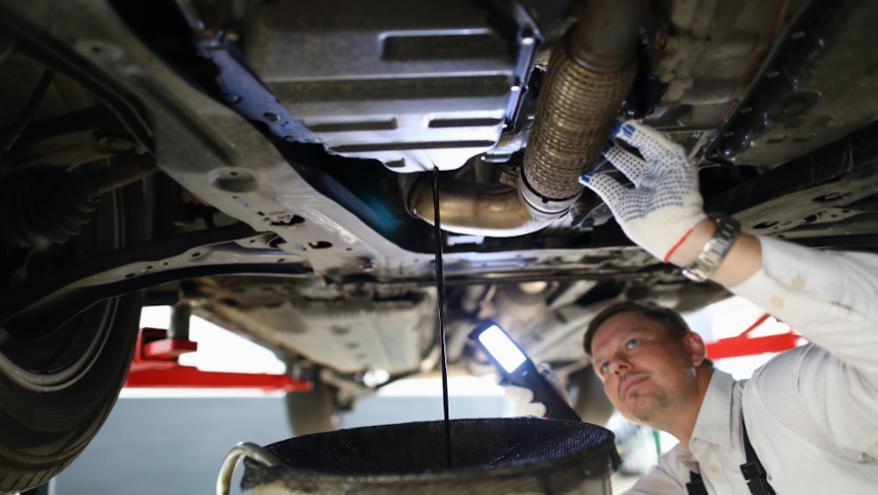Study: Auto groups should market service to used off-make buyers who purchase from sister stores

When dealers do not refer used off-make buyers to sister stores within their auto group for service, the group loses up to $230,000 annually in potential customer pay revenue, or CP$, per store.
That is one of the findings of Affinitiv’s Automotive Customer Loyalty study.
The study notes that auto groups continue to boost used-car sales in response to consumer demand and lower new-vehicle margins. But they are overlooking opportunities to service a high number of their used-car buyers, according to Affinitiv.
“If I buy a used Honda at a Toyota dealership, I might take it back to that dealership for an oil change, but it’s unlikely I’ll take it back for a brake job or transmission service,” Affinitiv chief executive officer Scot Eisenfelder said in a news release.
He continued, “Lost opportunities occur when the Toyota salesperson fails to transfer that customer’s information over to the Honda store within their group, so the Honda store can market to and win that buyer’s service business.”
Affinitiv’s vice president, strategy and analytics Doug Van Sach said, “In auto groups there needs to be a paradigm shift from individual stores holding onto a perception that they own all the customers in their database, to treating the group’s entire customer database as an asset that can be shared among all dealers.”
Van Sach added, “I realize on the new-car side this is a bit tricky, but on the used-car side everyone’s a winner. A store may give away some used off-make customers, but in return they will gain used same-make customers, which are worth significantly more.”
According to Affinitiv’s data analysis, in every dealership regardless of brand, the average repair order, or RO, amount is 68% higher for a used same-make vehicle than the average RO amount for a used off-make vehicle.
Analyzing data from deals at more than 1,000 auto dealerships, Affinitiv found that among all dealerships, used-vehicle sales from the first six months of 2017 to the first six months of 2018 are growing at a faster rate than new-vehicle sales. That results in a greater mix of used customers in a dealer’s database.
Domestic: Used vehicles as a percentage of total sales increased year over year from 43.6% to 44.4%.
Import: Used vehicles as a percentage of total sales increased year over year from 42.5% to 44%
Luxury: Used vehicles as a percentage of total sales increased year over year from 38.9% to 42.3%
That trend represents a threat to dealers’ current service business as the number of warranty customers decreases, Eisenfelder said.
“To attract more used customers and achieve greater service potential, auto groups would do well to organize themselves around their customers, instead of organizing around the individual stores,” Eisenfelder said.
The purchase to service, or P2S rate for dealerships represents the percentage of car buyers that return to the dealership of purchase for service. For its study, Affinitiv calculated P2S rates by taking all vehicle sales in the first six months of 2018, then looking out 12 months from the deal date to see if those VINs had an RO. Average P2S rates are as follows:
Domestic dealership P2S rate:
— Used same make: 48.4%
— Used off make: 26.1%
— Opportunity gap for auto groups: 22.3%
Import dealership P2S rate:
— Used same-make: 54.6%
— Used off-make: 28.5%
— Opportunity gap for auto groups: 26.1%
Luxury dealership P2S rate:
— Used same-make: 51.5%
— Used off-make: 19.8%
— Opportunity gap for auto groups: 31.7%
Affinitiv calculated the potential increase in CP$ that an auto group could make per store if it closed the opportunity gaps between used same-make and used off-make customers.
The company calculated the potential revenue increase by comparing the five-year lifetime value, or LTV, of used off-make vs. used same-make customers. LTV calculations factored in the average CP$ per RO, purchase to service rates, service retention rates and the average number of ROs per year, per VIN over a five-year period.
According to calculations, auto groups could increase their annual CP$ by $230,000 per store just by closing the service opportunity gap between used off-make and used same-make buyers.
“This figure doesn’t take into account that if you convert a used off-make buyer into a loyal service customer at another store, that customer is more likely to remain loyal to your auto group brand on the next purchase,” Van Sach said.
Affinitiv recommended some best practices to retain used off-make customers within an auto group. Those include:
— When a salesperson sells a used off-make vehicle to a customer, that provides an opportunity to make the customer aware of the appropriate brand store within the same group. The salesperson could offer an incentive for a first visit, such as a complimentary new owner orientation session or a service coupon.
— Ensure that used off-make buyers’ customer data is transferred to the appropriate store’s marketing database. Send out a, “Welcome to our family,” message that shows clear reasons to choose the dealer for service.
— Mine current databases for used off-make vehicle buyers in the last two years, and implement a targeted marketing strategy to recover lost revenue.
— Foster loyalty to the dealer group brand by recognizing and rewarding customers for their cumulative purchase and service activity across the dealer group.

 View The Latest Edition
View The Latest Edition

